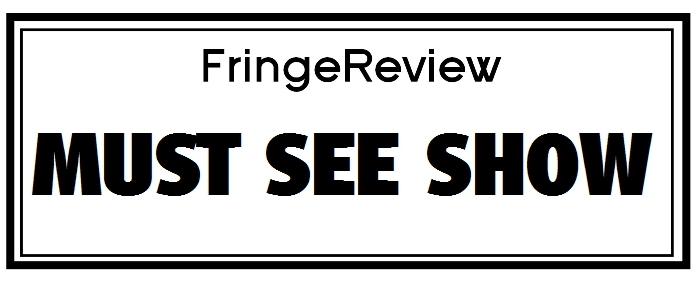Hollywood Fringe 2019
Scarlett Fever: The Great Southern Search
John Wuchte

Genre: American Theater, Dance and Movement Theatre, Historical, Physical Theatre
Venue: The Broadwater Main Stage
Festival: Hollywood Fringe
Low Down
An engrossing retelling of the two-year search for the perfect Scarlett O’Hara through inventive ensemble movement and live percussion.
Review
Good art has the power to take old stories and make them new, to change the way we look at something so familiar we’d never given it a second thought. In the case of Scarlett Fever, John Wuchte and his skilled ensemble of players take on the unlikely subject of the unseen story behind one of Hollywood’s all-time greatest films, Gone With The Wind. Yet they do in a completely unexpected way: while employing Wuchte’s Tribal acting technique, a kind of physical theatre of rhythmic gesture and dance driven by onstage percussion. It’s a juxtaposition you wouldn’t expect—the sleek, produced veneer of Old Hollywood with rough pared-down, primal physicality. It’s a creative gamble to be sure, but what could have failed utterly in less capable hands is a spectacular success that draws the audience in and keeps us totally rapt through its entire 60-minute duration.
The cast is divided through elegant costume design, which splits the ensemble into different subgroups within the storytelling yet keeps them united in general aesthetic. The entire vastness of the Broadwater mainstage is utilized but kept uncluttered, with only a few key props acting as set pieces—I was especially drawn to the use of a variety of different suitcases, some of which open to reveal inventive secondary light sources that have an almost magical effect on the actors they shine upon. The simplicity of the minimalist design allows for the actors to move expansively across the large stage, sweeping freely into different formations, from dyads to trios to big group movement numbers. We don’t need anything else but them and our first-class group of percussionists led confidently by Wuchte to the side of the stage to take us on our journey from Hollywood through the South as we search for the perfect Scarlett O’Hara. The show moves through its multiple forms of storytelling at a rapid yet unrushed clip—whether in dance, singing, direct address or dialogue, the movements are crisp and precise and the dialogue is snappy. The show’s informative, funny and engrossing—you learn a lot about the negotiations and discussions of Old Hollywood, whose old-fashioned sexism and misogyny is amply skewered by the show. Yet this is never done in a simple one-to-one representation of the story—with the added level of abstraction through rhythmic repetition of words/phrases along with gesture, certain themes arise, certain questions form, and the audience is left to reflect upon these individually without a moral being forced down their throat.
Although a few of the actors could stand to have more vocal energy, on the whole, the cast was incredibly strong, and their ensemble work was next to flawless. I could not take my eyes off of Olivia Cordell’s Kay, who both physically and vocally held her own between Max Udell’s dominating presence as Selznick and Austin Gold’s Myron, effectively embodying the rare and frustratingly unrecognized work of women in Hollywood production. The trio of would-be Scarletts—Talia Goodman, Sara Carpenter, and Cassi Schiano— each embody the completely unique personalities of a cut-throat, flirtatious studio contract actress, a wryly confident if jaded starlet, and a no name, totally green ingenue. Each unique in her own anxiety, desire and history, they all have their own voices yet all are united by their potential to be the next Scarlett, which is beautifully captured through both costume design and a trio of tightly-sung harmonies, where their individual voices blend seamlessly together. There’s wonderful payoff when we get to see all three screentest in the Big Red Dress—without spoiling anything, it’s a great moment that garners both laughs and empathy. By now, know intimately the psychology each actress is experiencing, and here we see all their hopes and dreams reduced to something as silly as a line reading and the shape of their noses in profile. It really captures how devastating the entertainment industry can be, giving a face to the thousands of faces that are cavalierly and habitually dismissed.
The show runs a tight hour, and while many Fringe shows of a similar length could use a trim, here every moment was filled and the time completely flew by as a result. It was a gratifyingly complete piece. An overarching percussive motif that carries throughout the show from the very opening to the very finish attains a satisfying totality when the actors begin to sing words along with it. What began as abstract rhythm and dance is now a concrete, metrical message that caps off the show perfectly.
Scarlett Fever is a unique, inventive and well-polished work of physical theatre, and while it’s terrific if you’re interested in experimental storytelling or have a love of Old Hollywood history, you don’t need either of those to appreciate this richly entertaining piece.


















































